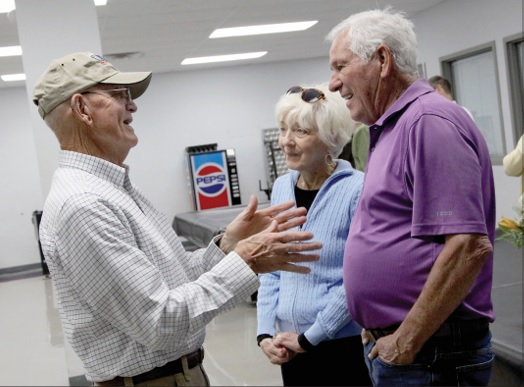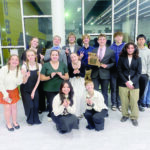Roaring River School comes back to life
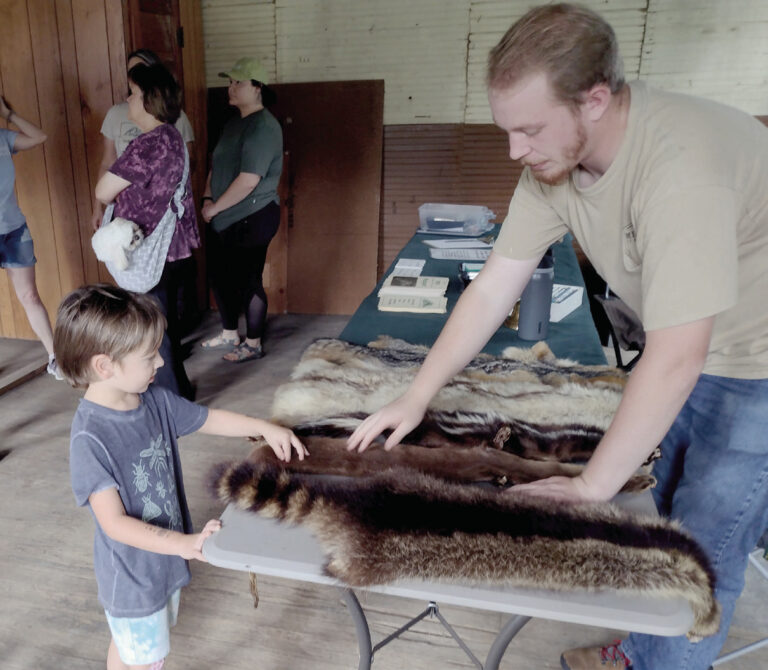
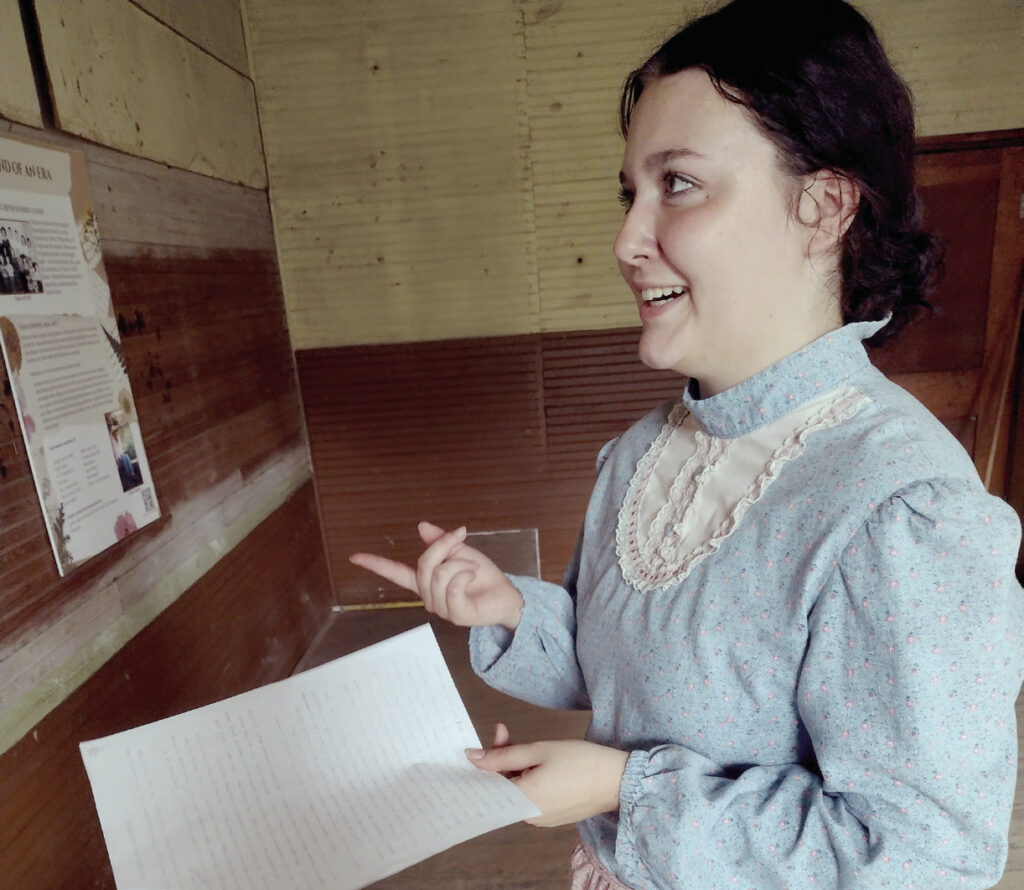
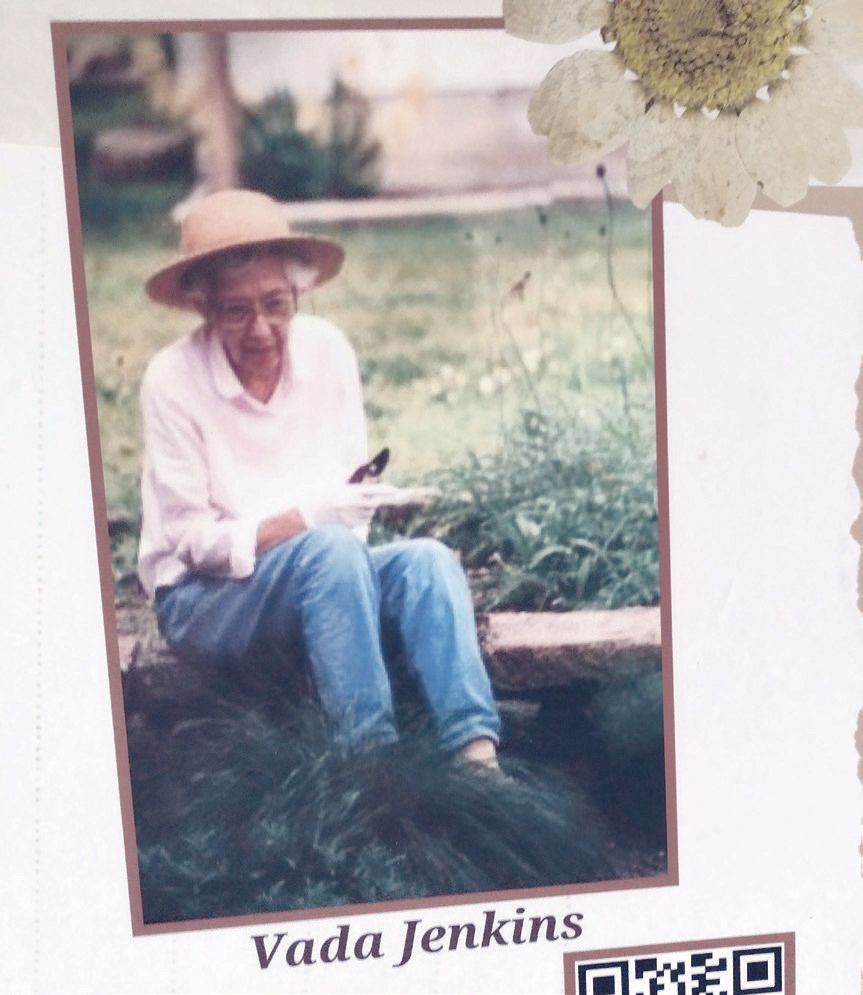
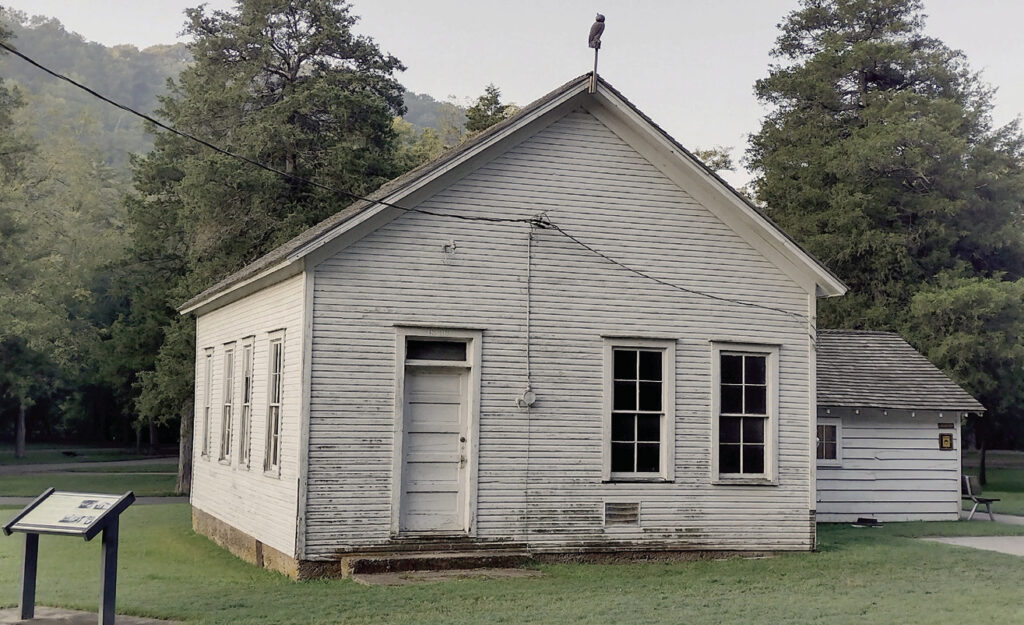
BY SHEILA HARRIS sheilaharrisads@gmail.com
Aug, 24 marked the re-opening of the old Roaring River Schoolhouse — not for student education — but for the education of the community at large.
While the building will not be open full-time in the future, it will be open from 10-11 a.m. on Saturdays for the public to learn the history of what once transpired within its walls, and perhaps, on a broader level, get a taste of what school days were like in all of the 112 rural one-room schoolhouses in Barry County.
The iconic, white-clapboard structure in Campground 1 at Roaring River State Park has been in the same location since its construction in 1912, the year Roaring River District #85 patrons decided they needed a new school building.
Residents passed a bond, funds were raised and the new school was ready for classes on Sept. 1, 1913. Thirty-four students enrolled that year, considerably more than the average enrollment of 19 students in years before and after.
Forty years later, the last classes were held in the old one-room school as the district consolidated with the Eagle Rock district. The abandoned building and its one-acre lot were sold to Roaring River State Park, and the school, once bursting with life, has been used for storage – until this year.
Several months ago, Roaring River State Park Seasonal Naturalist Lauren Akin happened upon a large binder full of notes and photos containing the discoverable history of Roaring River School. The contents of the binder represented the research of Vada Jenkins, who volunteered at the park from 19921993.
Jenkins passed away in 2017 at the age of 91, but, with her research, she left the community a legacy.
“I was so inspired by Vada’s research that I decided to expand on the school project where Vada left off,” Akin said.
That expansion has been a labor of love for Akin, a natural resources student at Missouri State University. This summer marked Akin’s third season with the park. She’s spent the last several months compiling Jenkins’ research — plus more of her own — into interpretive displays of the history of the Roaring River school for the benefit of the public.
Much of Akin’s research time was spent at the Barry County Museum, where she viewed the old Black schoolhouse to gain insight into how an actual oneroom school was set up.
With research and compilation of information completed, Akin used the CANVA design program to create visual displays.
“We traveled to Jefferson City to have the displays printed through the park system,” she said.
The result is a delightful tribute to the school days which pre-date the state park’s ownership of the building.
Before the new Roaring River schoolhouse was built in 1912, classes were held in a previous structure across the road, somewhere in Piburn Hollow, although the exact location is unknown. Classes in that building are believed to have begun in 1880.
A single document, a contract between the school district and a teacher (Ella Cravens), dated in 1872, gives evidence that an even earlier school existed: the McClure School, located up the old Roaring River Road near the current hatchery. The McClure School burned to the ground some time prior to 1880, and not much is known about it.
The one-acre plot upon which the current building now sits was purchased from R.E. Brunner of the Missouri Lithograph Marble & Mining Company in 1912. Some records indicate the cost was $51; others say $1.
As with the other rural schools of its day, Roaring River’s was a one-room structure, where one teacher taught students ages 5-18.
During the course of Roaring River School, various amenities were voted on by the Board, and added as deemed necessary throughout the years, including a dictionary, two additional windows and kerosene lanterns to hang on the walls during evening community events.
Until 1927, first through eighth grades were taught; after that date, the district added two years of high school, courtesy of state funds from the JOBS high school project. At that time, a wall was placed down the middle of the building to separate the lower grades from the high school.
School terms ranged from three and four months, during early years, up to eight months, during final years.
Cravens, Roaring River district’s first teacher, earned $25 (or $30) per month for a four-month term in 1872. The following year, the district paid $20 per month for a fourmonth term.
Later teachers fared better. Records show a $95 per month remuneration for the 1946-1947 school year, which was bumped to $100 per month, for the following three years. The final teacher at Roaring River — Wilda Bray, of Purdy — earned $225, per month, for the 1950-1951 term.
Although the school district employed several different teachers over the years, at least one of them was referred to as an “old lady” by one of her youngest students, Edith Carter Ball, who later in life wrote an essay about her early Roaring River school days.
“We liked her; she was a kind old lady,” said Ball, who was the grandmother of Carol Harvick, current Roaring River concessions clerk,.
“The teacher rode a dapple-gray mare to school every day, and milked it at noon,” said Ball, who walked to school, barefoot, with her two older brothers every day. “I always wondered what she did with that milk.”
The Ball family lived about 2.5 miles northeast of the school, on a route through about a mile of forest.
Students commonly walked or rode horses to school, took their lunches and studied hard during long days broken up by morning and afternoon breaks, plus one hour for lunch.
Roaring River District #85 consolidated with the Eagle Rock district for the 1952-1953 school term. Then, a few years later, both schools merged with the Cassville district as county-wide consolidation began.
“Former students who were fortunate enough to attend remember Roaring River School with warm hearts and happy smiles,” Jenkins recorded.
Long after the Roaring River school district disbanded, students and teachers continued to gather for school reunions, as evidenced by numerous photos over past decades.
“We salute those who were a part of [Roaring River] school,” Jenkins said, in her final notes. “We pay tribute to their strength, their courage and their uncomplicated wisdom. One-room country schools belong to history, now, [and] our loss may be greater than we know.
Akin and fellow Roaring River State Park interpreters Anna Skalicky and Erron Jones invite the public to visit the old school building in Campground 1, from 10-11 a.m., on Saturdays, and learn some of the history of the Roaring River school and the valley community at large.
“This schoolhouse project is a community project,” Akin and Skalicky emphasized. “We are excited to be able to open the school back up and to make it available to the local community, whose history it really is.”
As a community project, it’s a work in progress. Anyone with furniture or other historic items which may add to the authentic replication of the old school is invited to call the park’s nature center at 417-847-3742.
Naturalist

